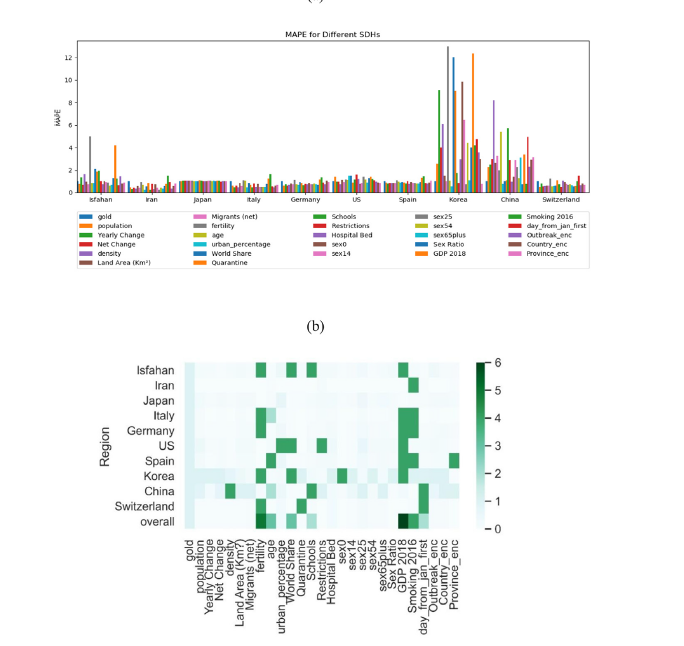Isfahan and Covid-19: Deep spatiotemporal rep

Isfahan and Covid-19: Deep spatiotemporal representation
The coronavirus COVID-19 is affecting 213 countries and territories around the world. Iran was one of the
first affected countries by this virus. Isfahan, as the third most populated province of Iran, experienced
a noticeable epidemic. The prediction of epidemic size, peak value, and peak time can help policymakers
in correct decisions. In this study, deep learning is selected as a powerful tool for forecasting this
epidemic in Isfahan. A combination of effective Social Determinant of Health (SDH) and the occurrences
of COVID-19 data are used as spatiotemporal input by using time-series information from different locations.
Different models are utilized, and the best performance is found to be for a tailored type of long
short-term memory (LSTM). This new method incorporates the mutual effect of all classes (confirmed/
death / recovered) in the prediction process. The future trajectory of the outbreak in Isfahan is forecasted
with the proposed model. The paper demonstrates the positive effect of adding SDHs in pandemic prediction.
Furthermore, the effectiveness of different SDHs is discussed, and the most effective terms are
introduced. The method expresses high ability in both short- and long- term forecasting of the outbreak.
The model proves that in predicting one class (like the number of confirmed cases), the effect of other
accompanying numbers (like death and recovered cases) cannot be ignored. In conclusion, the superiorities
of this model (particularity the long term predication ability) turn it into a reliable tool for helping
the health decision-makers.
paper: https://www.ncbi.nlm.nih.gov/pmc/articles/PMC7534756/pdf/main.pdf
